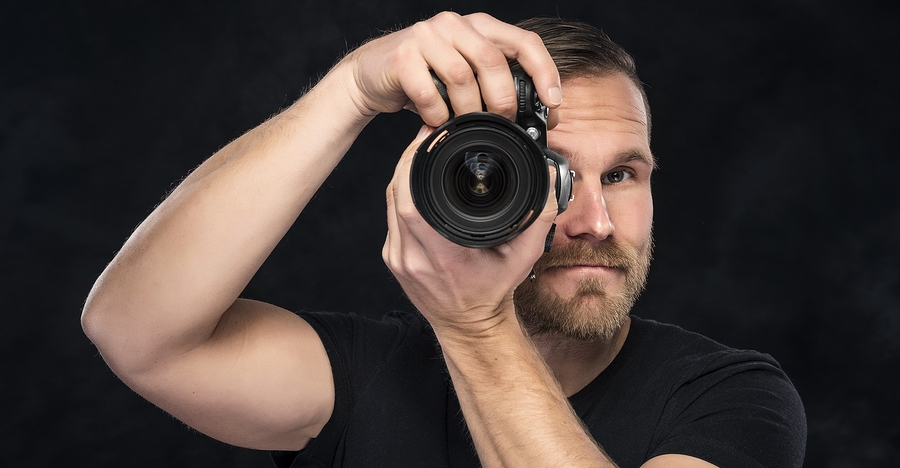Aundre Larrow is a New York-based photographer, specialized in portrait photography.
He revealed some of his best tricks on how to connect with your client and succeed in portraiture. With the help of the tips he shared you can immediately see improvement in your work and your clients will notice it, too.
Plan ahead to make sure you have the right equipment.
Reflectors are amazing, and then they have a diffuser in the middle so that if it’s too bright out, you can ask one of your friends to use it to diffuse the light. Then, just use a camera and a lens that most readily represents how you see the world. So for me, a full frame, my 60mm with a 35mm.
A camera, probably an extra battery, and a reflector are all I would really, really say to use. You don’t need a lot—portraits are the easiest to take technically, but the hardest to execute properly.
Set photo subjects at ease by being yourself.
If you expect someone you don’t know to be comfortable with you and be themselves, you have to be yourself. For me, I’ll chat with you a lot and try to make you feel comfortable, pick you up a little bit. But whatever comes most naturally to that person is important, because at the end of the day you’re shooting a client.
They commission you to do something, so they understand that you are achieving your vision the best you can. If you are quiet, then be quiet, and if you’re not then don’t be, but whatever it is just speak to the client beforehand and say, ‘Hey, I’m generally like this. What makes you feel comfortable?’
If you get a feeling someone will be stiff, ask them to bring one of their friends with them. I can help them be themselves more easily.
Make sure client expectations are clear.
Try to understand what their goal is. If it’s head shots, are they trying to get hired at National, are they trying to get hired at Goldman Sachs? Are these portraits for their personal website? Are they for social?
Have them show you examples of work they think would work well, and if you see something that’s a red flag—like pictures in your work that don’t look like the pictures they’re showing—just discuss that with them ahead of time.
Don’t be afraid to redo work if a project doesn’t turn out as planned.
If a client’s unhappy, speak to people—one or two people you know that are professionals—and just ask them, ‘What do you think?’ Get a second opinion. Sometimes you might have to reshoot something. I’ve had to reshoot things before, and it helps because you want to show a willingness to deliver what they want. At the end of the day, that’s what’s going to matter.
Be ready to work with criticism.
I don’t like to work from example pictures, but I do for certain clients. You have them send you example pictures, you have them look at your portfolio and then you ask them, ‘What in my work do you like?’
During your shoot, I show the client shots and ask them, ‘How do you feel about how you look here? How do you feel about this?’ Not everybody would do this and I don’t recommend it for everybody—but I think especially if it’s somebody’s head shots, you want to show that to them so they understand what they look like.
Get more tips from Aundre Larrow over at Format Magazine.
Source: Format Magazine


I really like the way you talked about being prepared and planning ahead. I’ve found that having the right equipment can make a huge difference if you’re wanting good results. I loved all of your tips, and all of them are great, but that was the one that really stood out to me. Thanks for sharing!